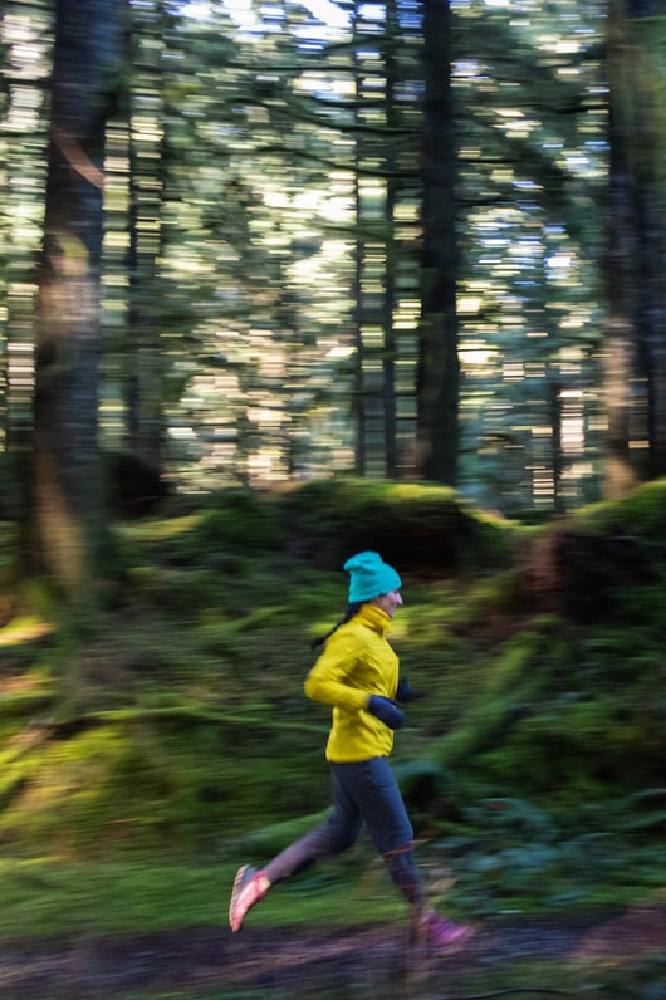To help begin embracing trail adventures and trail running, and lean into the wellness aspects that come along with getting outside, medical advisor at AllTrails Dr. Suzanne Bartlett-Hackenmiller shares her top tips for getting started.

Image courtesy of Pixabay
When looking for a new trail or path, the key is to do your research. Then, when you start your run or walk, you feel confident in your route and can focus on the experience instead of figuring out where you're going. By researching in advance, you'll find the trail that’s best for the effort, length and experience you're looking to achieve -- AllTrails has over 22,000 trails in the U.K., so you're sure to find what you're looking for.
I'm often traveling, which means my schedule can be unpredictable. No matter where in the world I am, I'm always able to find countless trails nearby so I can enjoy the outdoors and explore the local terrain and features. Even when I'm home, I'm constantly surprised to discover new trails and routes in my own neighborhood that I can enjoy, whether I'm looking to walk, run, hike or bike.
We all know that getting outdoors is good for us physically. But what I find truly profound, is how a healthy mental state can yield a healthy physical state. Nature is one of those special places where we can achieve both mental and physical health. From the sun's vitamin D to the phytoncides we inhale from the trees and plants, there is no question that spending time outdoors is a great way to boost our immunity and stay healthy. Simply put, when our mental health is humming, chances are, our physical health and immune system are too.
Shane Finn - an AllTrails athlete and professional trail runner, says: 'When starting your trail running journey, it can be easy to get intimidated - things like elevation, trail length, gear, or technical terrain can be enough to keep anyone from hitting the trail. The key is to prepare so you start your run with confidence.' He offers some further advice:
Research Your Route: Before you start your run, do your research, not just to find the trail that’s best for you, but so you understand the kind of run you’re headed into and can show up prepared. Ask yourself - how much food and water do I need? What is the weather going to be like? How exposed is the trail? Is the terrain technical? Make sure to check ahead for park and facility closures. Even if the park is open, the facilities - including toilettes, water fountains, and car parks - may be closed. The AllTrails app is a great place to go to check the status of possible park closures, read up on trail reviews and check out photos from other community members, and find a new trail to explore. Knowing this information will help you have a more enjoyable run and you’ll feel more confidence in where you’re going and what to expect!
Bring A Friend: If you can, it’s always best to head out with a friend, partner or family member - especially as a novice trail runner. If this isn’t an option, check out the Lifeline safety feature in the AllTrails Pro app - users can select up to five safety contacts so friends and family can track your run and stay up to date on your whereabouts and progress.
Gear: It’s easy to get caught up in feeling like you need a lot of gear to start trail running but there are just a few key things you need.
Shoes – the right shoe will make for a better running experience. If you’re just starting out on less technical trails, any running shoes will work but you’ll want to move to a trail-specific shoe for technical trails for increased traction and stability.
Water! When you’re out on the trail, you’ll likely be responsible for carrying your own water. There are many options including backpacks with reservoirs but a hand-held water bottle also works
Food – Bring an energy bar, gel, or chews along with you to stave off hunger or provide fuel on the trail. For longer trail runs, bring a few! We recommend trying several different brands and flavors over your runs to see which ones work best for you.
AllTrails Pro – The AllTrails app not only makes it easy to filter trails to find the route that’s best suited for you, but helps you navigate the trail to keep from getting lost. With AllTrails Pro, you can download your maps so that you can stay course even without service.
Sunscreen: A small tube of sunscreen will keep you safe from harmful sun damage and bonus points if you bring chapstick with sunscreen.
Start Small and Build: Start by finding “easy” rated trails and filter for runs that are short in distance and elevation change. Look for trails on dirt roads and wide paths; you’ll want to work on strengthening the stabilizing muscles in your lower legs, which will help keep you upright and reduce injury risk when you progress to more technical terrain. Once you're comfortable with those trails, try adding more distance for added endurance, or find a trail that includes some hills to really start engaging those strength skills. One good method to follow is to only add 10% of distance each time you go out so not to over strain.
Enjoy the journey: Most importantly, trail running is a mix of running, hiking and walking. Even professional trail runners walk steep hills so don’t get frustrated if you’re spending more time walking than running! Trail running is truly about the journey, not the speed of reaching your destination.
www.alltrails.com

